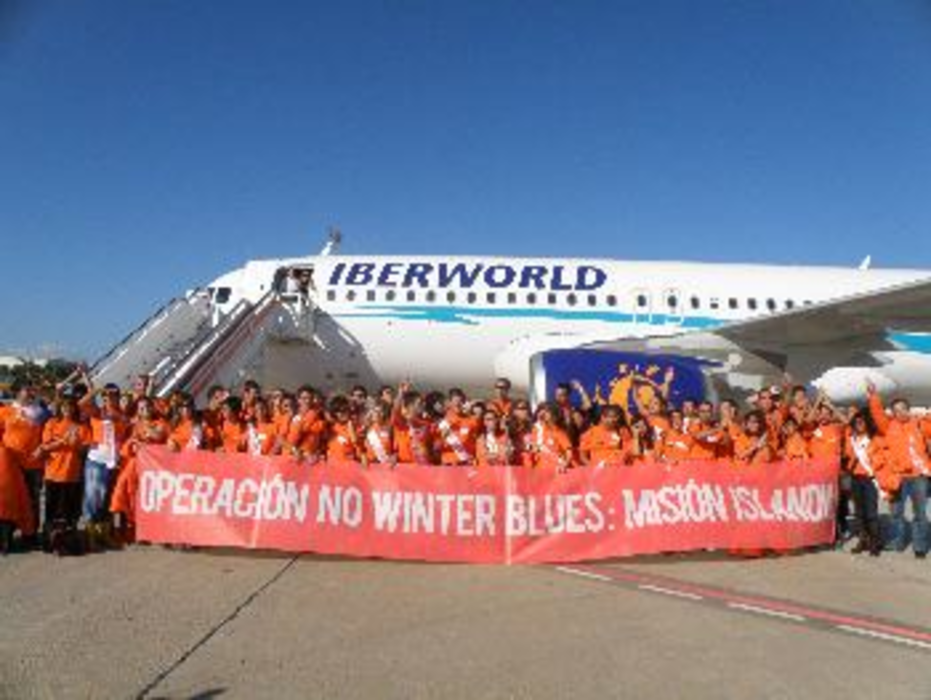With a European fiscal crisis threatening its main source of income, the Canary Islands tourism office asked its ad agency for something bold. The result combined the Internet, social media and old-fashioned door-to-door selling to send a traditional media and public relations campaign over the top.
Challenge: The seven-island chain off the coast of Africa was faced with a potential debacle in 2008. Even as new destinations were competing with it for tourists from Northern Europe seeking sun and sand, the recession was deflating the market fast.
That was going to turn into a fiscal crisis for the Canary Islands, a part of Spain that gets 36% of its gross domestic product from tourism — and 65 percent of that in direct spending. With 12 million tourists every year, compared to 2 million inhabitants, the country has the highest visitor-to-resident ratio in the world.
The islands are a destination for English, German and Nordic tourists — a popular, low-cost vacation. But that was being challenged by rising competition from warm-weather resorts in Turkey, Egypt, Tunisia, Malta and Croatia, which also offered low-cost sun and sand a two-hour flight away, but with newer hotels.
Additionally, the Euro was losing its value against other currencies, which reduced Spain’s price advantage. It is down 30 percent against the British pound since July 2008.
Tourism to the islands had dropped 22 percent in 18 months, said Angel Riesgo, president of DDB Madrid, the Islands’ lead agency.
“In a way they were talking to us about a national disaster, a national problem,” Riesgo said.
Solution: The goals of the campaign were threefold: Create greater visibility against competitors, stop the drop in tourism and involve Canarian society in tourism promotion.
“They were betting on their future. They had a high risk, and they should know,” said Riesgo.
DDB worked with Wikreate, a digital agency based in San Francisco, to craft a multimedia campaign that asked Canarians to help promote their own home, under the tag “Compartimos Nuestra Fortuna (“Share Our Fortune”) because the Canary Islands are known as the Fortunate Islands. They began by soliciting Canarians’ tips of things to do and places to go in the seven islands via a website, compartetufortuna.com (Share your fortune), which eventually generated about 5,000 recommendations.
Another website, nowinterblues.com was part of an advertising and PR effort aimed at northern Europeans, promoting the islands as the cure. It included TV ads and public relations efforts about the seasonal depression that hits residents of northern climates for lack of sunshine.
The two efforts came together in a door-to-door push that launched in Iceland in 2009, when 100 Canarian youths traveled there to knock on doors and sell the virtues of a winter vacation in the Canary Islands.
The young people, multilingual and web-savvy 21- to 30-year-olds, were recruited among 20,000 who applied, said Riesgo. They worked on a volunteer basis, with the campaign budget paying only their travel costs, he said.
“There’s a lot of social content on the web. We felt we could create social content offline, in real life,” said Ezequiel Trivino, founder of Wikreate. The revival of door-to-door selling resonated in many countries, and the youngsters made many friends who have expanded the social network promoting the Canary Islands, he said.
After Iceland, the group also traveled to London, Berlin and Copenhagen to stage activities built around the “No Winter Blues” campaign, including “speed dating events” to recruit other volunteers to spread the word in five countries in Europe. At every stop, they created so much media interest that the campaign itself became news, said Riesgo.
Results: As a result, the campaign, which cost 7.9 million Euros, or about $8.5 million, generated nearly 15 million Euros in free publicity, including 253 million media impressions.
But more to the point, it helped reverse the tourism drop-off, Riesgo said. Tourism to the Canary Islands grew 16 percent year-over-year in 2009, while the rest of Spain was down 5.3%. It had the largest gains among all of Spain’s tourism destinations and its best showing since 2005, he said. The next winter campaign will begin in October, and based on the results of the first one, the Canarian tourism officials have decided to cut back their investment in traditional media, he said.








